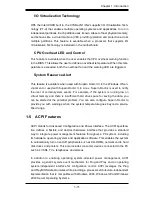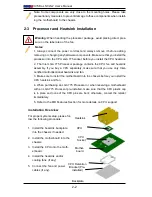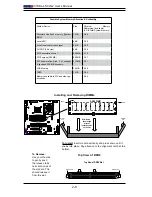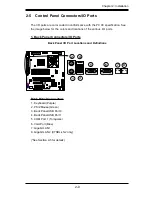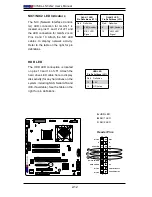
Chapter 1: Introduction
1-11
I/O Virtualization Technology
With the Intel ICH9R built in, the X7SBL-LN1/LN2 supports I/O Virtualization Tech-
nology (VT-d) that enables multiple operating systems and applications to run in
independent partitions. Each partition uses its own subset of host physical memory,
and behaves like a virtual machine (VM), providing isolation and protection across
multiple partitions. This feature is available when a processor that supports I/O
Virtualization Technology is installed on the motherboard.
CPU Overheat LED and Control
This feature is available when the user enables the CPU overheat warning function
in the BIOS. This allows the user to define an overheat temperature. When this tem
-
perature is exceeded, both the overheat fan and the warning LED are triggered.
System Resource Alert
This feature is available when used with Supero Doctor III in the Windows OS en-
vironment or used with Supero Doctor II in Linux. Supero Doctor is used to notify
the user of certain system events. For example, if the system is running low on
virtual memory and there is insufficient hard drive space for saving the data, you
can be alerted of the potential problem. You can also configure Supero Doctor to
provide you with warnings when the system temperature goes beyond a pre-de-
fined range.
1-5 ACPI Features
ACPI stands for Advanced Configuration and Power Interface. The ACPI specifica
-
tion defines a flexible and abstract hardware interface that provides a standard
way to integrate power management features throughout a PC system, including
its hardware, operating system and application software. This enables the system
to automatically turn on and off peripherals such as CD-ROMs, network cards, hard
disk drives and printers. This also includes consumer devices connected to the PC
such as VCRs, TVs, telephones and stereos.
In addition to enabling operating system-directed power management, ACPI
provides a generic system event mechanism for Plug and Play and an operating
system-independent interface for configuration control. ACPI leverages the Plug
and Play BIOS data structures while providing a processor architecture-independent
implementation that is compatible with Windows 2000, Windows XP and Windows
2003 Server Operating Systems.















